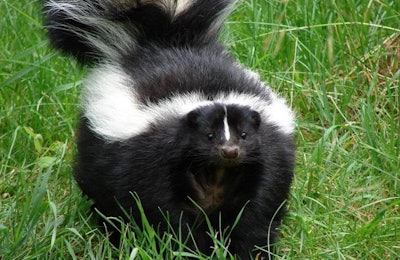
A lot of research has been done regarding possible sources that can spread avian influenza, but scientists from the USDA Animal and Plant Health Inspection Service (APHIS) have conducted studies that point to two sources you may have never considered: rabbits and skunks.
According to a blog written by Gail Keirn, APHIS legislative and public affairs, research by APHIS’ National Wildlife Research Center (NWRC) demonstrated that skunks and cottontail rabbits can become infected with and shed some avian influenza viruses in a controlled setting. These settings include both commercial and backyard poultry flocks.
Findings of the studies
The agency conducted experiments with captive skunks and cottontails that were inoculated with low pathogenic avian influenza and mallard ducks that were not inoculated.
After several days in certain pens, mallards were moved to the pens where the inoculated skunks were, and vice-versa. In a related experiment, mallards were moved into the same pen as the rabbits, where they shared the same water and food sources.
The result: One of four mallards placed in the pens after inoculated skunks had been there tested positive for LPAI, while one of five mallards exposed to the rabbits became infected.
Test results reinforce need for biosecurity
This discovery shows just how important it is not to let up on biosecurity efforts. Unlike the avian influenza outbreak of 2015 that was widespread, the only confirmed cases in 2016 have been in Dubois County, Indiana, and Jasper County, Missouri, and did not spread beyond those two counties. Good biosecurity practices have played a major role in stopping the spread of the virus.
While APHIS experts stress that more studies will need to be done to better understand the disease risks posed by wild mammals commonly found on farms, this particular research shows that avian influenza can be carried by unusual suspects and the poultry industry must continue to keep its guard up.


















